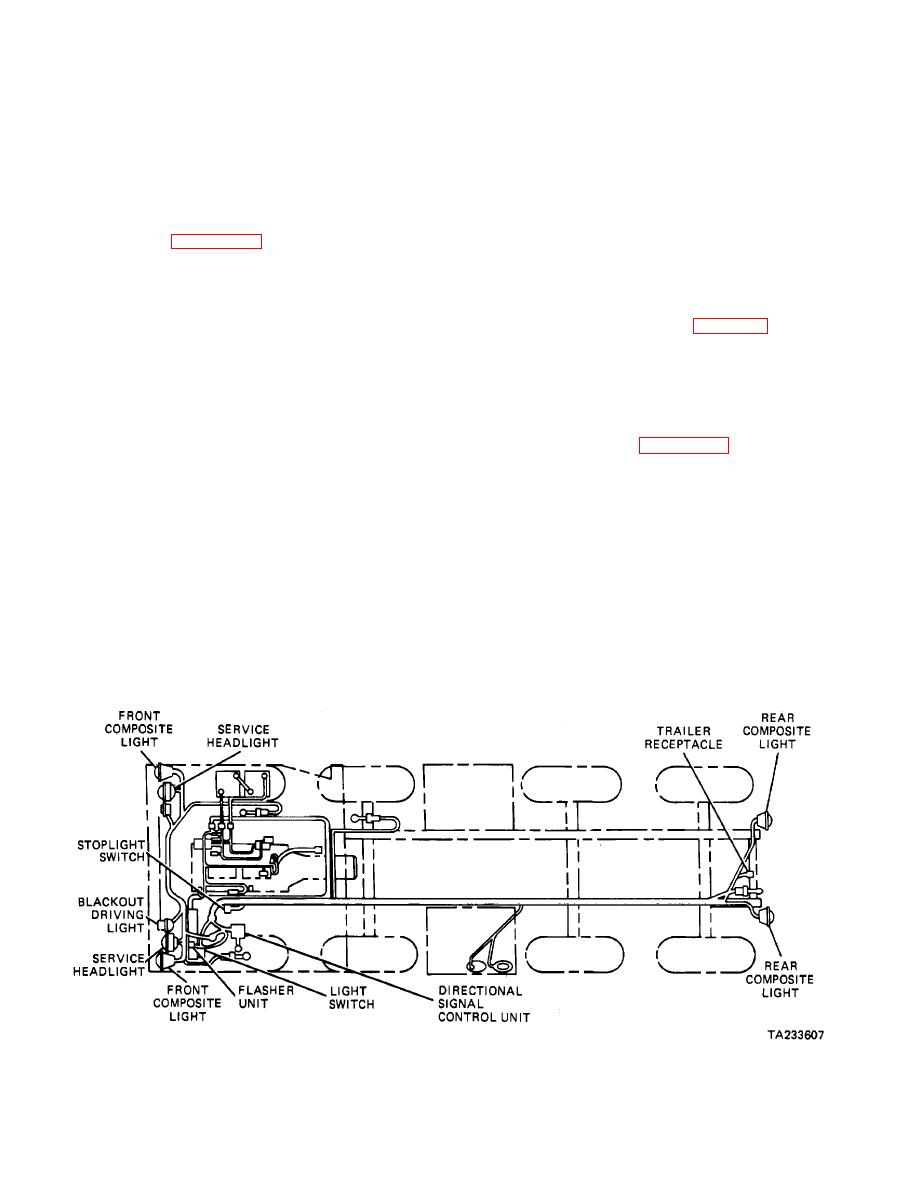
| Tweet |

Custom Search
|
|

|
||
 TM 9-8000
CHAPTER 16
LIGHTING SYSTEMS
Section I. MOTOR VEHICLE LIGHTING
g. Wires and control switches to connect these
lights and lamps to the current source.
vehicle lighting parallels the history of the lighting of
houses and buildings, with oil lamps and gas lamps
16-2.
Lamps.
having been used In the early motor vehicles. With the
development of a satisfactory electrical system, electric
lighting has become the standard means of lighting
a. General Description (Fig. 16-2). Small gas-
motor vehicles. The lighting system found on most
filled Incandescent lamps with tungsten filaments are
modern motor vehicles consists of the following:
used on motor vehicles. The filaments supply the light
when sufficient current Is flowing through them. The
a. Two headlights for Illuminating the road ahead of
lamps are designed to operate at low voltage, such as 6,
the vehicle.
12, or 24 volts.
b. Two parking, or side, lights for Indicating the
b. Construction (Fig. 16-2). Most lamps are
location of the vehicle when parked.
provided with a single contact for each filament within the
lamp, the current through each filament being completed
c. Taillights to light the rear license plate and to
to the shell of the lamp base. A double filament lamp
show a red light to the rear.
with the single-contact construction is shown in figure 16-
2. Two contacts are provided on the lamp base, each
d. Instrument
panel
lights
to
Illuminate
the
being connected with one of the filaments. The return
Instruments.
from both filaments is to the lamp base shell, which is
grounded through the lamp socket. Thus, there are two
e. Body lights, such as dome and step lights, to
separate circuits with two contacts on the base, each of
light the Interior of the vehicle.
which might properly be termed a single contact, for a
grounded circuit. Because the volt-
f. Special lights, such as spotlights, signal lights,
blackout lights, and stop and backing lights.
Figure 16-1. Typical Automotive Lighting Circuit.
16-1
|
||
 |
||